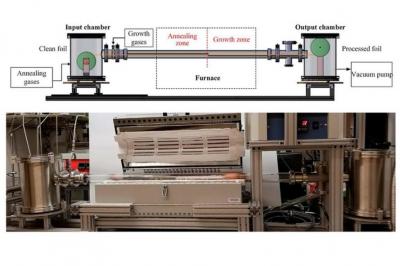Researchers at MIT have developed a method that might enable the production of long rolls of high-quality graphene. The continuous manufacturing process can reportedly produce five centimeters of high-quality graphene per minute. The longest run was nearly four hours, and it generated around 10 meters of continuous graphene.

MIT is referring to the development as the first demonstration of an industrial, scalable method for manufacturing high-quality graphene that is tailored for use in membranes that filter a variety of molecules. These membranes could be used in biological separation or desalination, for example. The researchers drew from the common industrial roll-to-roll approach blended with chemical vapor deposition, a common graphene-fabrication technique.
MIT associate professor of mechanical engineering John Hart said, In the end-to-end process, we would need to integrate more operations into the manufacturing line. For now, we’ve demonstrated that this process can be scaled up, and we hope this increases confidence and interest in graphene-based membrane technologies, and provides a pathway to commercialization.